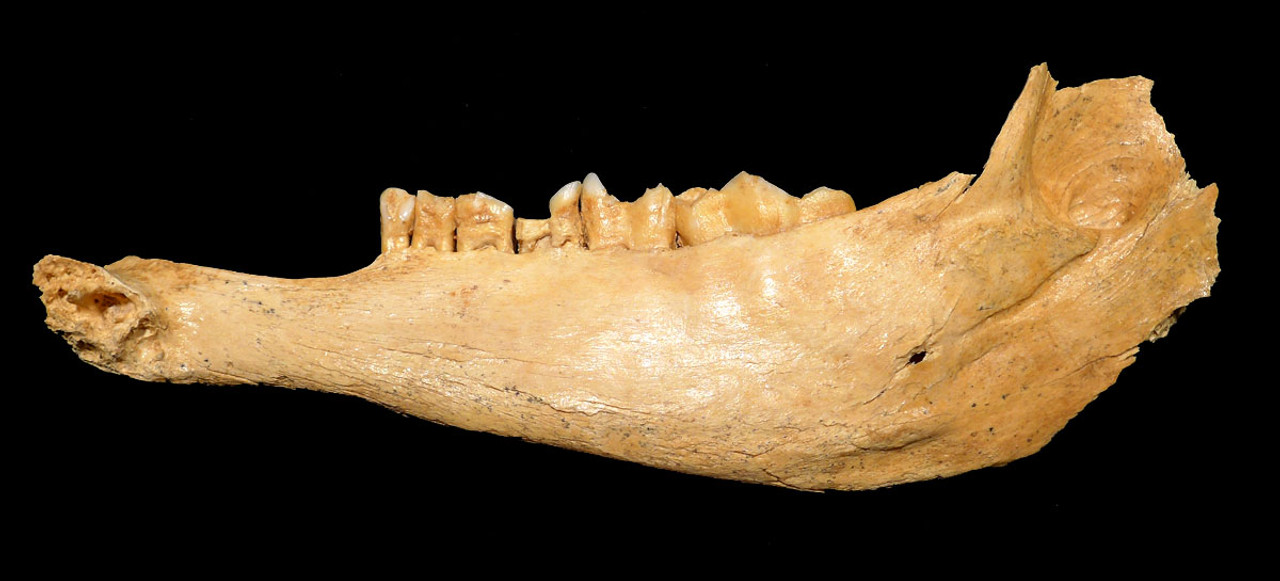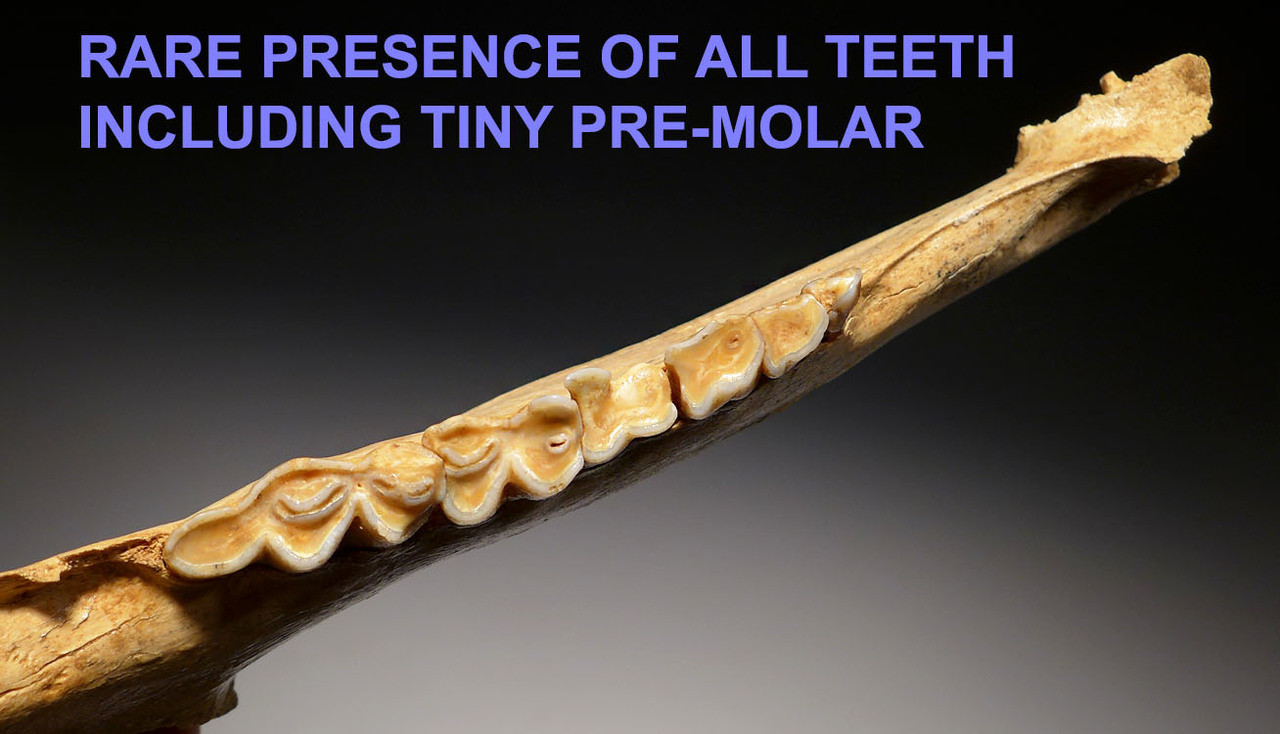Product Description
In over three decades, we have had small fragments of Ice Age European fossils of the Ibex but never have we had the opportunity to offer such a complete example as this. This amazing rarity is a nearly complete right side mandible of the Ice Age Ibex, found in the Carpathian Mountains in a cave deposit, in the same layer as Cave Bear remains. It shows stunning preservation with an extremely rare presence of ALL the molars and premolars - nothing missing or damaged! In almost all cases, fossil jaws lose teeth over time, especially the tiny premolar which this jaw still has! There is a hole at the underside of the ramus which has always been thought of by the former collector as well as us, that this is made from HUMAN PREHISTORIC HUNTERS. This is exactly the spot where one would open a hole to extract all the prized marrow, a highly nourishing food source of Neanderthal and Cro-Magnon people of prehistory.
Based on the odd and very clean broken opening at the bend in the jaw, it is quite possible that this specimen was the remain of a hunted kill by primitive human. Bones such as wild boar, ibex, etc. have been found in caves as a result of primitive human habitation. The majority of these bones are always broken to get to the highly-prized marrow. This break appears too clean to have been caused by natural causes and an opposing tooth impression is lacking on the other side suggesting animal predation. Most likely, the puncture was caused by a small pointed hand axe with a single blow. Most interesting is the location of the hole. This single opening would have been the most advantageous location to extract all marrow from the jaw!
HISTORY
The Capra ibex is a wild mountain goat that thrived during the Ice Age in Europe. It is one of the most famous animals depicted on numerous cave drawings and paintings. No doubt, with its exotic and impressive horn display and unmatched skill in climbing rocky terrain, it was a revered and respected beast by prehistoric humans. This animal possessed very large curved horns with pronounced ridges running across the full length of these horns. They were stout beasts with short legs and hoofed feet that were especially designed for irregular terrain. These creatures are alive today in limited regions and are called the Alpine Ibex. They thrive in the most extreme and hazardous environments, consisting of arctic-like temperatures and seemingly impossible to navigate rocky mountain faces. Even today, very little is known about these animals because their habitat is practically unreachable by scientists for study. Aside from their magnificent horns, their hooves are uniquely designed to maintain a sure footing on rock.
Capra ibex live in herds from 7 to 30 individuals with some males living alone. They are diurnal animals meaning they are active during the day, with their most active periods being early morning and late afternoon. Their height at the shoulders range from 2.3 to 3.1 feet. Body weights range from 88 to 264 pounds. Horn lengths have been measured up to 40 inches. Life spans run from 10 to 14 years.
The Capra ibex has an uncanny ability to negotiate the most dangerous rock cliffs and ledges with seemingly careless abandon giving it the appearance that it has magical abilities. The imagery of seeing these animals playing and hopping from rock to rock on a near vertical cliff, is an unbelievable sight and was likely just as amazing to Neanderthal and Cro-Magnon prehistoric humans, explaining their popularity in prehistoric art..
 US DOLLAR
US DOLLAR
 EURO
EURO
 AUSTRALIAN DOLLAR
AUSTRALIAN DOLLAR
 CANADIAN DOLLAR
CANADIAN DOLLAR
 POUND STERLING
POUND STERLING
















